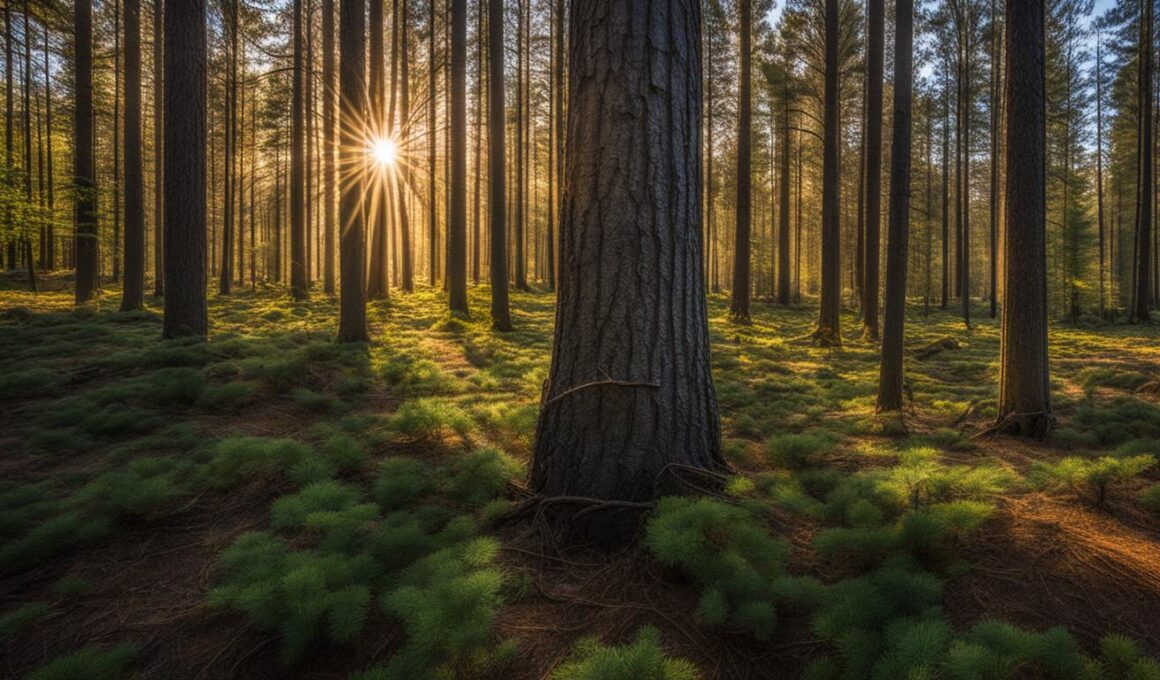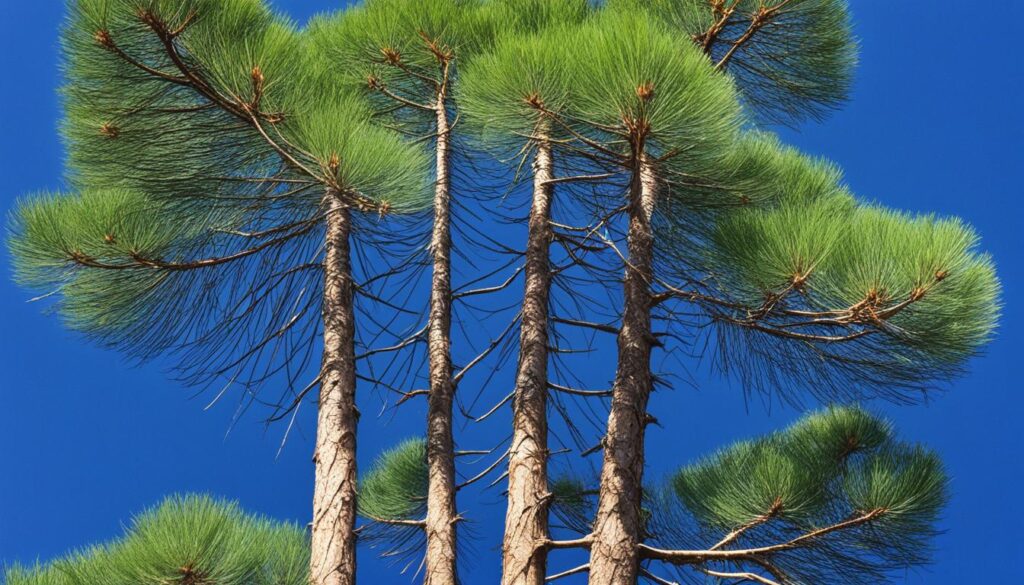Welcome to our guide on white pine growth rate and how it impacts the health of these majestic trees. Understanding the factors that influence growth rate and employing proper care techniques are crucial for maintaining vibrant and flourishing white pines in your landscape.
White pines are known for their impressive height and beauty. However, their growth rates can vary depending on several key factors. By delving into the world of white pine growth, we can uncover valuable insights that will help you nurture healthy trees and ensure their longevity.
Throughout this article, we will explore the varying growth rates of white pines, the factors that influence their ultimate height, and essential care tips to promote their well-being.
Let’s begin by understanding how the growth rates of white pines differ based on the site index. The site index measures the potential height a tree can reach in a span of 50 years, serving as an indicator of the tree’s growth potential.
White pines exhibit different site indices, ranging from poor sites with a height potential of 60 feet to the best sites, where they can reach as much as 120 feet. Most commonly, the ideal site index for white pines falls between 90 and 100 feet.
Interesting findings reveal that white pines on superior sites experience similar growth rates to those on relatively poor sites after 55 years. This suggests that the significant height difference between trees on excellent growing sites and trees on lesser sites primarily occurs during the first 55 years of growth.
However, it’s important to note that the potential height of white pines may not exceed 200 feet, contrary to commonly mentioned heights of 250 feet. Factors such as site quality, wind breakage, and ice damage all play a role in determining the ultimate height of a white pine tree.
This valuable research is summarized in the USDA Forest Service manual titled “Silvics of North America,” providing a reliable resource for understanding white pine growth rates.
As we continue our journey, we will explore the unique characteristics of eastern white pines and their preferential habitat. Join us in the next section to discover more about these majestic trees and how to support their growth.
Eastern White Pine – A Majestic Tree with Unique Characteristics
The eastern white pine, scientifically known as Pinus strobus, historically stood as one of the tallest trees in the eastern United States. This conifer is the only five-needled pine native to Indiana, with bundles of needles including five needles per bundle. The needles are typically between two and four inches long and remain on the tree for two to three years before falling in the fall. Younger trees have dark and relatively smooth bark, which becomes furrowed as the tree matures. Eastern white pines add a ring of side branches and a terminal shoot yearly with age. The species produces cones that can reach up to eight inches in length and have thin scales. These cones remain on the tree for two years.
Eastern white pines typically grow between 65 and 100 feet tall, although they can exceed 150 feet in old growth forests. They prefer acidic, moist, and well-drained soil, but can tolerate alkaline soils to some extent. The range of the eastern white pine extends from the central and eastern United States and Canada to as far west as Arkansas, Missouri, Iowa, and Minnesota in the U.S. and Manitoba in Canada. Its distribution stretches south through the Great Lakes states and the Appalachian Mountains into northern Georgia, as well as east along the Atlantic seaboard.
Eastern white pines are widely used for construction lumber, carving, boatbuilding, and other applications due to their adaptability, workability, and historical value.
Conclusion
Understanding the growth rate of white pines is crucial for ensuring the health and care of these majestic trees. The research on white pine growth rates reveals that the height difference between trees on excellent growing sites and those on lesser sites occurs primarily during the first 55 years of growth. After age 55, the growth rate becomes relatively consistent, regardless of site quality.
Eastern white pines, with their unique characteristics and preference for acidic, moist, and well-drained soil, can grow between 65 and 100 feet tall. While historical reports of white pines exceeding 150 feet exist, the potential height of these trees is unlikely to exceed 200 feet and certainly not 250 feet.
By considering these factors and implementing proper care techniques, such as providing adequate moisture, ensuring proper drainage, and protecting against salt and air pollution, you can nurture healthy white pine trees and enjoy their beauty for years to come.
Is the Growth Rate of White Pines similar to Fast Growing Trees in Colorado?
The growth rate of white pines in Colorado can be similar to the top fast growing trees in Colorado. However, it’s important to consider the specific species and local climate conditions. Some top fast growing trees in Colorado include quaking aspen, hybrid poplar, and Colorado blue spruce.










